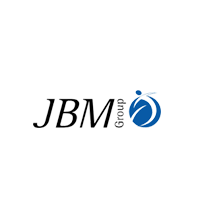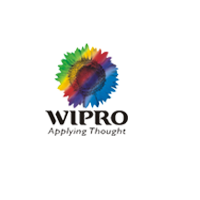The Robotics Training program
Robotics works by means of the makeup, development, movement, and use of bots, along with computer systems planned for their control, sensory feedback, and information dispensation.
It is an interdisciplinary part of industrial and technology so as to incorporate mechanical industry, electrical industry, computer science, and numerous others.
Covered topics:
- opening To Robotics
- prologue To Embedded System
- Computer Languages
- Motor Controlling Circuits
- fundamental Electronics
- Types Of Motors
- Types Of Sensors
Why Xtrude?
- You will get to work chained live projects
- Certified professional will conduct training.
- The entire training will be based on current industry trends.
- Placement partners have approved our training curriculum.
- Our Labs are very well-appointed in the midst of most modern edition of hardware and software.
- Our classrooms are effusive geared up by way of projectors & Wi-Fi access.
Our trainers:
Since each and every of our Trainers are functioning professionals thus they are having lots of live projects, trainers will make use of these projects during training sessions.
Our trainers also lend a hand to participants to dig up sited in their individual company by Employee recommendation / in-house Hiring process.
Course Syllabus
INTRODUCTION TO ROBOTICS
- Present and future scope of robotics
- Types of robots
- Application of robotics
BASIC ELECTRONICS
- Resistor
- Capacitor
- Diode
- Transistor
TYPES OF MOTORS
- AC motor
- DC motor
- Stepper motor
- Servo motor
- DC geared motor
TYPES OF SENSORS
- Introduction to Sensing Devices
- IR sensor
- Light searching sensor
- Temperature sensor
- Touch sensor
- Motion sensor
MOTOR CONTROLLING CIRCUITS
- Motor controlling using driver ICs IC’s
- LM358(dual op- amp)
- LM35(Temperature sensor)
- L293D(dual H-bridge IC 7805(Voltage regulator)
INTRODUCTION TO EMBEDDED SYSTEM
- History & need of Embedded System
- Basic components of Embedded System
- Type of Microcontroller
- Memory Classification
PIN DESCRIPTION & ARCHITECTURE OF AVR MICROCONTROLLER
MEMORY ARCHITECTURE OF ATMEGA16
BRIEF INTRODUCTION TO COMPUTER ARCHITECTURE
- Classification of Von-Neumann and Hardware Architecture
- Difference between RISC and CISC
- Memory Classification (Primary & Secondary)
COMPUTER LANGUAGES
- Low Level Languages
- Middle Level Language
- High Level Language
- Interaction of language with Compilers
EMBEDDED DEVELOPMENT TOOLS
- Assembler
- Interpreter
- Compiler
- Simulator
- Emulator
- Debugger
INTRODUCTION OF EMBEDDED C
- Why C
- Benefits of C over Assembly
- Constants, Variables & Data Types
- Keywords & Identifiers
- Data type & its memory representation
LED INTERFACING
SEVEN SEGMENT INTERFACING
- Non-Multiplex
- Multiplex
LCD INTERFACING
- To move data on LCD in 8-bit
- To move data on LCD in 4-bit
- To display data on both rows in 4 and 8-bit Mode
- Scrolling message display on LCD in 4 and 8 bits Mode
SWITCH & KEYPAD INTERFACING
- Introduction to Switches & Keyboard Matrix
- Interfacing Circuit of Switches & Keyboard Matrix
- Programming of Keyboard Matrix & Switches
- Controlling of LED’s by using Switches
- Key board Matrix & LCD Interfacing Program
TIMER
- Timer0/Timer1/Timer2 Programming
- PWM using Timers
INTERRUPT
- Timer Interrupts Programming
- External Hardware Interrupts Programming
- Interrupt Priority
- Hardware Classification of Embedded System
- Programming Language Classification of Embedded System
- Advantage & Disadvantage of Low level & High level programming language of Embedded System
MICROPROCESSOR & MICROCONTROLLER CLASSIFICATION
- Difference between Microprocessor & Microcontroller
- Classification based on architecture
- Classification based on Instruction Set
- User Defined Data type (structure)
- Array
- Pointers
- Operators
- Arithmetical Operator
- Logical Operator
- Bitwise Operators
- Control Statement and Loops
- If
- Switch
- For
- While
- Do While
- Introduction to Preprocessor Directives
- Assembly within C (Inline Assembly)
RS232 INTERFACING
- Interfacing with PC using UART/RS232
- Interfacing with PC using UART/RS232 with Interrupts
ADC INTERFACING
- To display digital data on LED
- To display digital data on LCD
SENSOR INTERFACING
- Introduction to Sensing Devices
- IR Sensor Interfacing
- Temperature Sensor Interfacing
OTHER COMMUNICATION PROTOCOLS
- I2C protocol
- SPI Protocol
Course Information
- Class Start: Every Monday, Wednesday & Friday
- Course Duration: 60 hours(40 hours for Software Training & 20 hours for Project Handling)
- Student Capacity: 8-12 students per batch
- Certification: For Software Training(1) & For Project Handling(1)
-
Course Benefits Include:
- Industrial Visit
- Tool Kit
- Lifelong Support
- Placement Guaranteed
- Project Handling
- Resume Writing
- Moneyback Guaranteed








